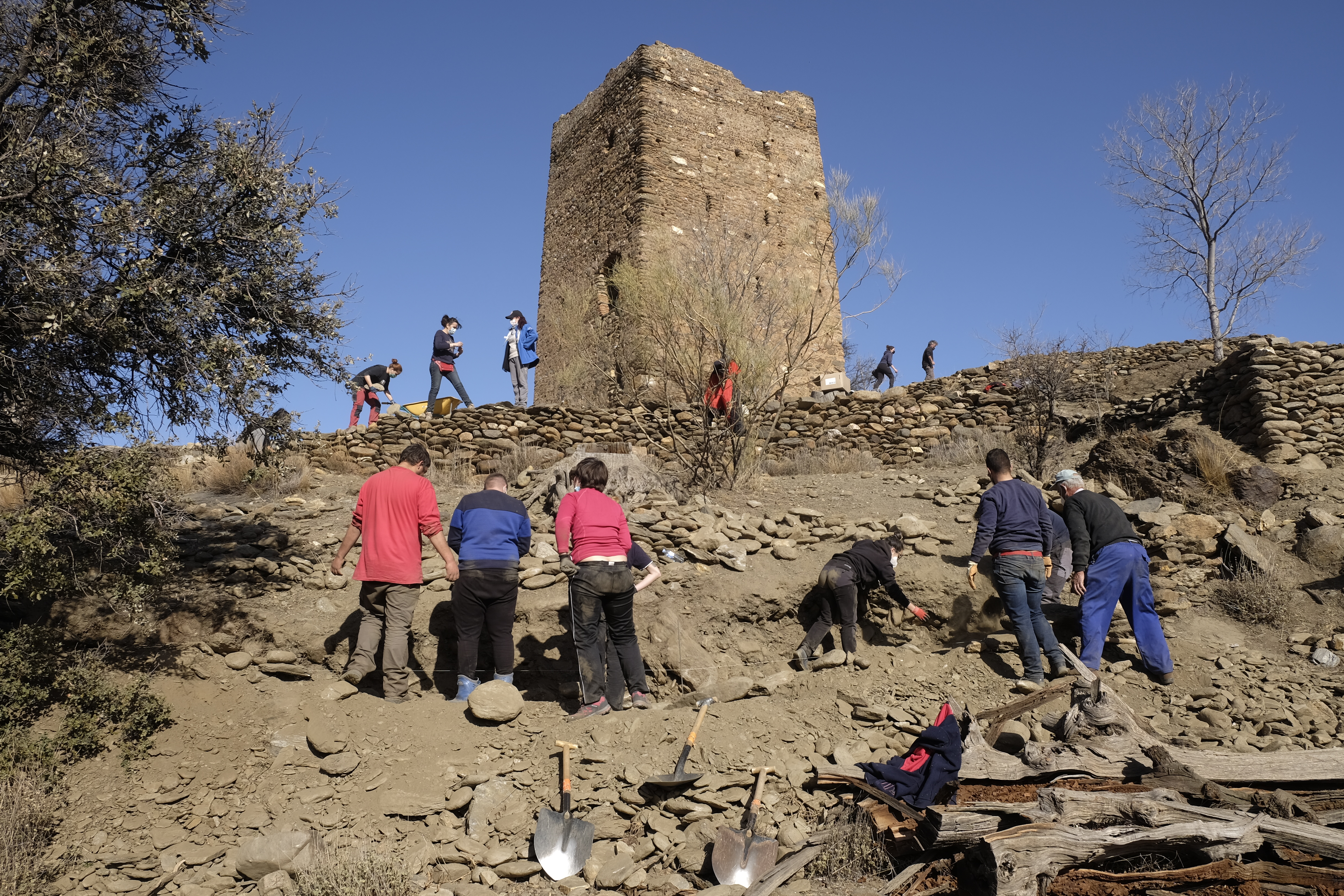
TRAININGS
STUDY AREA OF SPAIN

Education activities
For the Spanish case study, the University of Granada carried out the recovery of the agricultural environment of the Jerez del Marquesado ravine in the vicinity of the Alcázar tower. It is one of the main Spanish case studies in this project (Green River).
The work was planned in 3 parts with the aim of presenting the importance of this agricultural space that is part of a characteristic historical landscape of the municipality. More than 50 people attended the event, which involved not only students and volunteers but also the local community and authorities.
The design was structured in 3 phases. The first one consisted of presenting the results of the archaeological excavation at the Alcázar tower carried out in 2021. Simultaneously with this excavation, different guided tours were conducted, coinciding with local festivities and events that attracted a larger population (such as the cultural week of Jerez del Marquesado).
Subsequently, the project for the restoration of agricultural spaces (often known as "balates") was designed to preserve the rural identity and traditional cultivation methods of the area. Parallel to this work, chestnut replantations were carried out in the surroundings of the excavated site. These trees are a natural heritage of this area and are abundant in the Jerez ravine surroundings.
After this, and in order to assess the perception of the local community, a working session was held with local schools. This allowed quantifying the scope of the interventions carried out during the project, and through the use of ethnographic surveys, we could measure the impact of the activities on the residents and their environment. With this, we aimed to address the concept of the utility of archaeological and environmental interventions in the surroundings of the Alcázar tower in Jerez del Marquesado, as well as the involvement of the local community in these activities.
Lastly, cultural routes were designed around historical irrigation systems. These systems place the Jerez ravine and the Alcázar tower as a central point in the routes, allowing visitors to understand the importance of rural heritage and its preservation.
The results we obtained from both the surveys and the civic participation in the activities carried out were positive. It highlights the need to protect this heritage and work on both heritage education and environmental education as key elements in sustainable rural development.